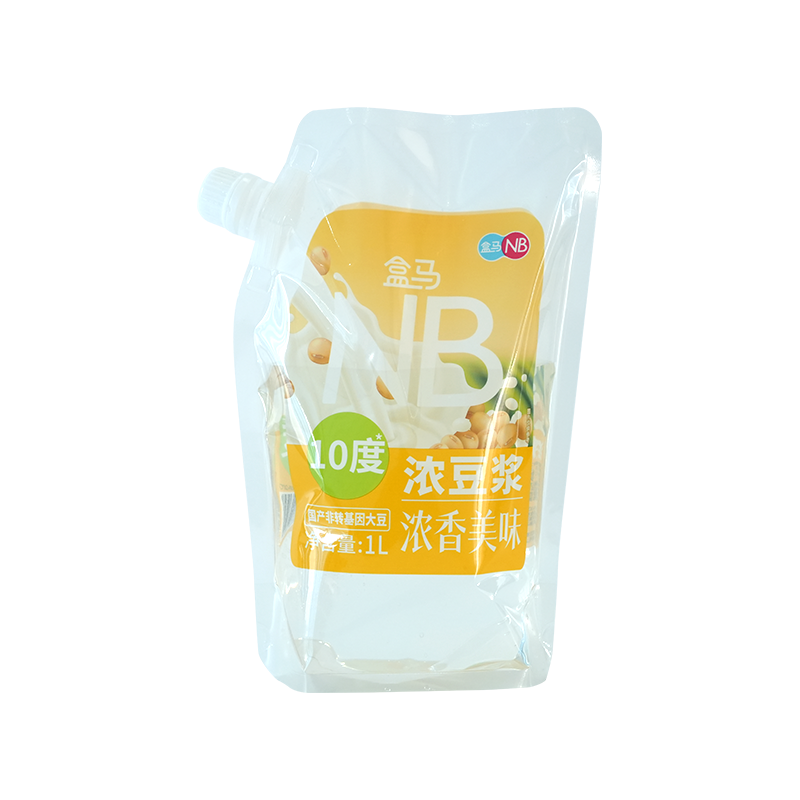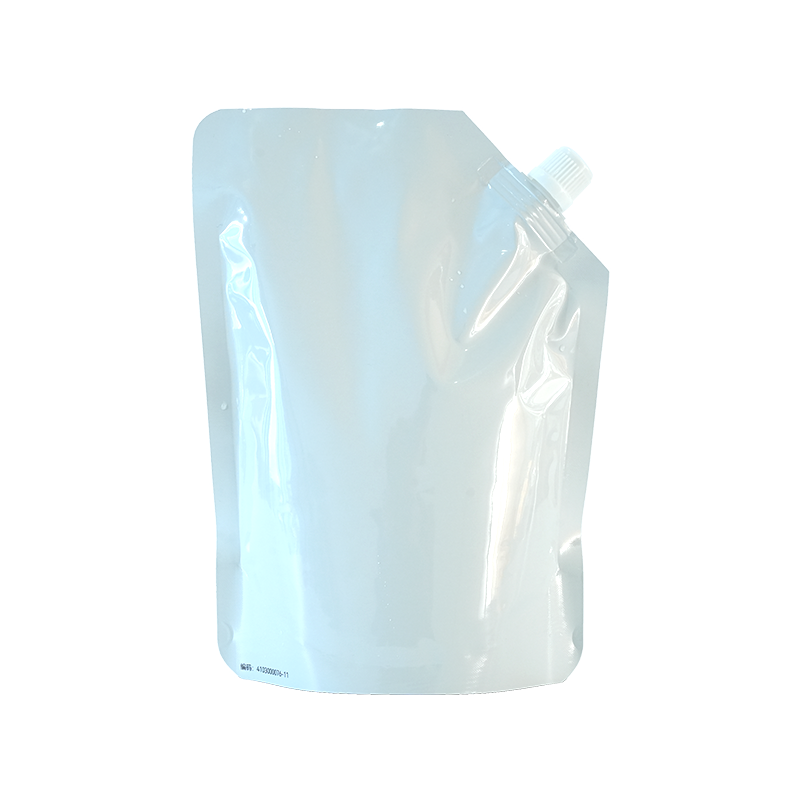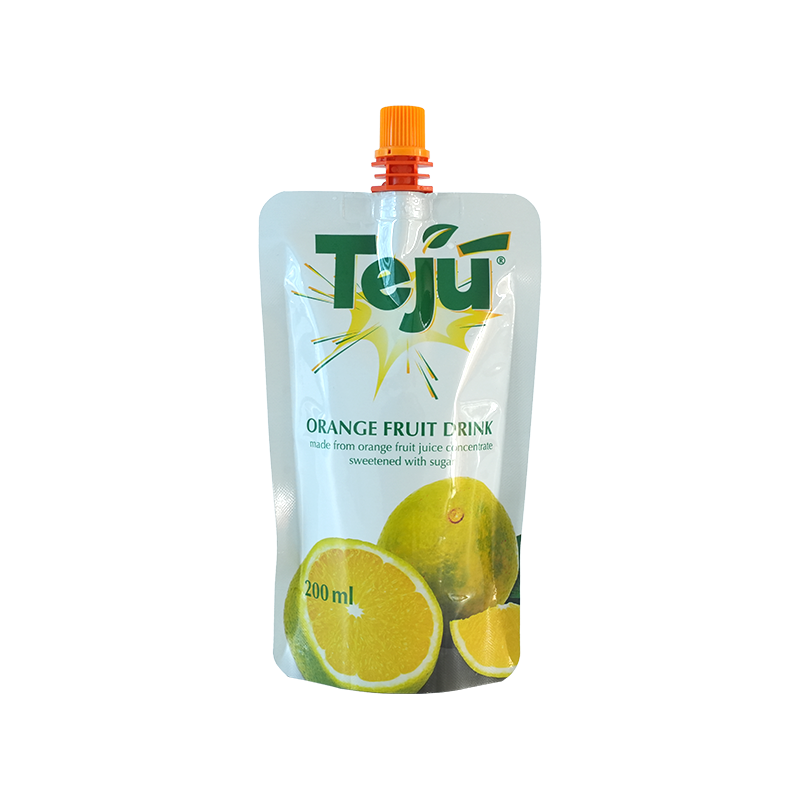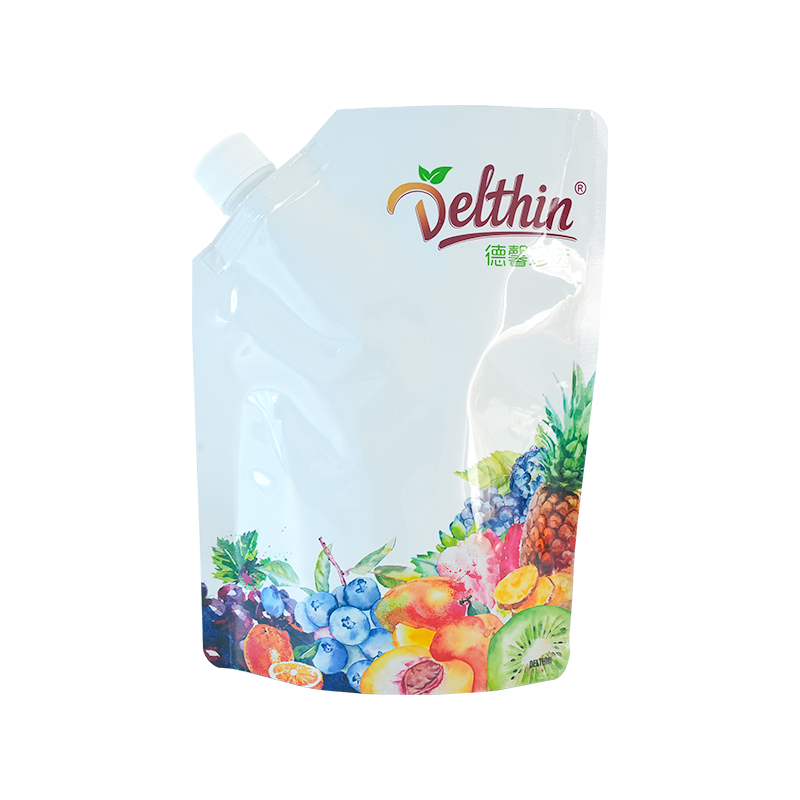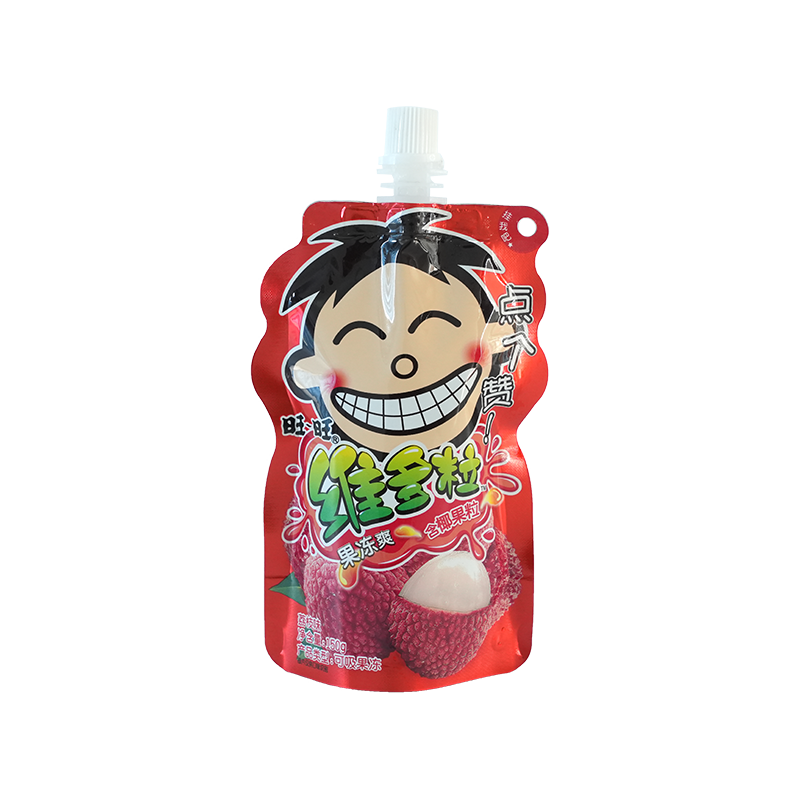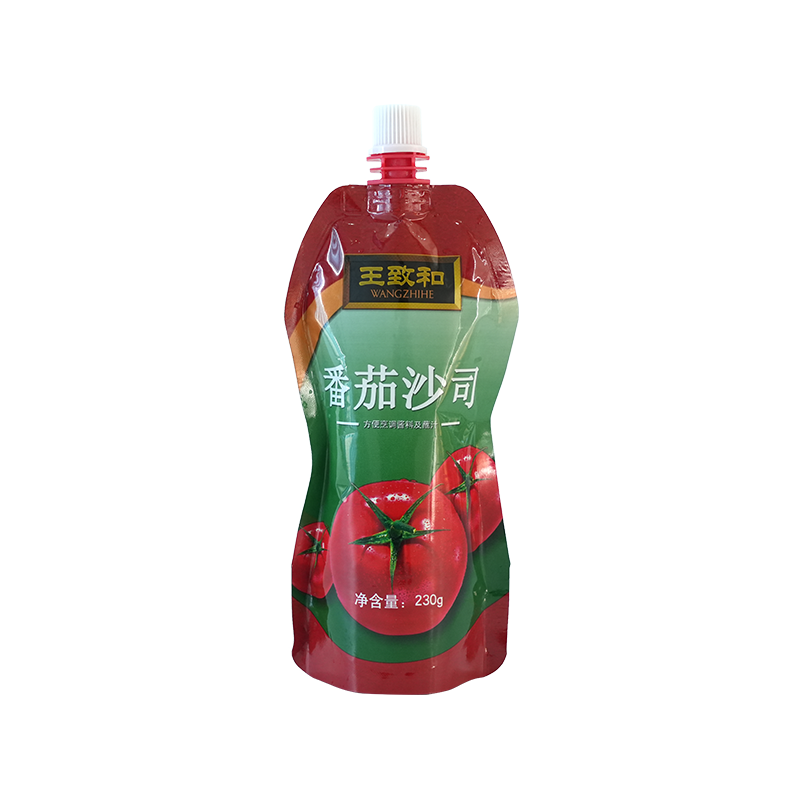Materials and barrier properties: How to choose composite films suitable for different food characteristics?
In the field of food packaging, the material selection and barrier properties of stand-up pouches are crucial and directly affect the shelf life and quality of food. Different foods have unique characteristics, from high-fat nuts to high-water sauces, from easily oxidized meat products to light-sensitive coffee powder. Each food has different requirements for packaging materials, which also constitutes a key technical challenge for food packaging stand-up pouches in terms of material selection and barrier properties.
Taking oily foods as an example, nuts, fried foods, etc. are rich in oils and fats, which are prone to oxidation and rancidity during storage, producing a rancid smell, affecting the taste and nutritional value. This requires the packaging material to have excellent oxygen barrier properties to prevent oxygen from entering the bag and reacting with the oils and fats. A common solution is to use a composite film containing EVOH (ethylene-vinyl alcohol copolymer). EVOH has excellent oxygen barrier properties. Compounding it with polyethylene (PE), polypropylene (PP) and other substrates can effectively block oxygen and extend the shelf life of oily foods such as nuts. In addition, for some high-end nut products, an aluminum foil layer can be added to the packaging to further enhance the barrier properties and improve the texture and grade of the packaging.
For sauces with high water content, such as ketchup and salad dressing, the packaging material must not only have good moisture barrier properties to prevent moisture loss and the sauce from drying up, but also be able to withstand the acidic components in the sauce to prevent the packaging from being corroded and leaking. A composite structure of PET (polyethylene terephthalate)/AL (aluminum foil)/PE is usually selected. PET has high strength and transparency, which makes it easier for consumers to observe the product; aluminum foil can effectively block moisture, oxygen and light; PE is used as a heat-sealing layer to ensure the sealing performance of the package. This composite structure can not only meet the barrier performance requirements of sauce foods, but also adapt to the heat-sealing process in the packaging production process.
In the face of meat products that are easily oxidized, in addition to the need to block oxygen, it is also necessary to consider the barrier to microorganisms. In terms of material selection, in addition to using EVOH composite film, packaging materials with antibacterial properties can also be used. For example, adding nanosilver particles or other antibacterial agents to the film can inhibit the growth and reproduction of microorganisms, thereby extending the shelf life of meat products. At the same time, in order to prevent light from damaging the color and nutritional components of meat products, packaging materials with light-shielding properties can be selected, such as black or dark composite films.
For coffee powder that is sensitive to light, it is necessary to use materials with high barrier properties and good light-shielding effects. At present, the most common structure on the market is a multi-layer composite structure, such as PET/AL/PA (polyamide)/PE. PA has good flexibility and puncture resistance, which can effectively prevent the package from being punctured during transportation and storage; the aluminum foil layer plays a key role in blocking light, oxygen and moisture, ensuring that the aroma and flavor of the coffee powder are not destroyed. In addition, special gas absorbents, such as carbon dioxide absorbents, can be added to the inner layer of the packaging to absorb the carbon dioxide released by the coffee powder, maintain the gas balance in the package, and further improve the preservation effect.
To select composite films suitable for different food characteristics, it is necessary to comprehensively consider factors such as food ingredients, storage conditions, shelf life requirements, etc. By rationally matching substrates with different functions to form a targeted composite film structure, the technical challenges of food packaging stand-up bags in terms of materials and barrier properties can be effectively solved, providing reliable packaging protection for food.
Structural design and stability: How can the bag shape be optimized to ensure self-sustaining and compressive strength?
The structural design of food packaging stand-up bags is directly related to their self-sustaining and compressive strength, which not only affects the display effect of the product on the shelf, but also the safety of the product during transportation and storage. However, in practical applications, bag design needs to take into account multiple factors. How to optimize the bag shape to achieve good self-sustaining and sufficient compressive strength has become an important technical challenge facing food packaging stand-up bags.
The self-sustaining property of a stand-up bag mainly depends on the design of the bottom structure. Traditional flat-bottom stand-up bags have certain limitations in standing stability. When the contents are small or unevenly distributed, they are prone to tipping. To solve this problem, special-shaped bottom designs are currently widely used, such as eight-side-sealed stand-up bags and three-dimensional bottom stand-up bags. The bottom of the eight-side-sealed stand-up bag is composed of eight faces, which increases the contact area with the plane, disperses gravity, and makes it stand more firmly. In terms of structural design, the angle and length of each side of the bottom are accurately calculated to ensure that the bag can remain upright when it is full or partially full. The three-dimensional bottom stand-up bag forms a three-dimensional structure similar to a box at the bottom, which further enhances the self-sustaining performance, while also improving the visual effect and space utilization of the packaging.
Compressive strength is also a key factor that cannot be ignored in structural design. During food transportation and storage, stand-up bags are often subjected to stacking pressure. If the compressive strength is insufficient, it is easy to cause the packaging to deform and break, which in turn affects the quality of food. Optimizing the bag type to improve the compressive strength can be done from multiple aspects. First, reasonably increasing the thickness and hardness of the bag body and selecting high-strength film materials, such as increasing the thickness of PA or PET, can effectively improve the bag's puncture resistance and compression resistance. Secondly, adopting a rib design, adding a reinforcement structure to the side or bottom of the bag body, similar to the steel bars in construction, enhances the overall rigidity of the bag. For example, setting raised ribs on the bottom edge of an eight-side sealed stand-up bag can significantly improve its compressive performance. In addition, optimizing the contours and lines of the bag type, avoiding sharp corners, and reducing stress concentration points can also help improve compressive strength.
In addition to the bottom structure and overall strength, the center of gravity distribution of the bag type also has an important impact on self-reliance and compressive strength. When designing, it is necessary to reasonably adjust the size and shape of the bag type according to the weight and characteristics of the contents to ensure that the center of gravity is in the right position. For example, for heavier liquid foods, the height of the bag body can be appropriately reduced and the bottom width can be increased to move the center of gravity downward and improve stability. At the same time, in the design of the sealing position, the impact of the sealing on the overall structure must also be considered. The use of wide-width sealing or multi-layer sealing structure can not only ensure the sealing effect, but also enhance the strength of the bag mouth to prevent the seal from cracking under stacking pressure.
Optimizing the bag shape of food packaging stand-up bags to ensure self-sustaining and compressive strength requires the comprehensive application of material science, mechanical principles and design aesthetics. Through innovative bottom structure design, reasonable material selection and scientific center of gravity distribution adjustment, continuous improvement and perfection of bag shape can effectively cope with technical challenges in structural design and stability, and provide safe and stable packaging solutions for food.
Sealing process and leakage risk: How to improve heat sealing effect and reduce bag breakage rate?
In the production process of food packaging stand-up bags, the sealing process is a key link to ensure product quality and safety. Poor heat sealing effect can easily lead to leakage, which will not only cause food contamination and waste, but may also cause consumer complaints and damage brand reputation. In actual production, the heat sealing process is affected by many factors. How to improve the heat sealing effect and reduce the bag breakage rate has become an urgent technical challenge facing food packaging stand-up bags.
Heat sealing temperature, pressure and time are the three core parameters that affect the heat sealing effect. Composite films of different materials have different requirements for heat sealing conditions. If the heat sealing temperature is too high, the heat sealing layer material will decompose and carbonize, destroy the sealing performance, and even cause bag breakage; if the temperature is too low, the heat sealing layer cannot be fully melted, resulting in loose sealing and easy leakage. Insufficient pressure will prevent the heat sealing layers from fitting tightly, forming bubbles or gaps; excessive pressure may make the heat sealing layer thinner, reduce strength, and increase the risk of bag breakage. If the heat sealing time is too short, the heat sealing layer cannot be completely fused; if the time is too long, it will also damage the material. Therefore, precise control of heat sealing parameters is the key to improving the heat sealing effect. Before production, it is necessary to conduct heat sealing tests on composite films of different materials, draw heat sealing curves, and determine the best combination of heat sealing temperature, pressure and time. At the same time, the use of advanced heat sealing equipment, such as intelligent temperature-controlled heat sealing machines, can monitor and adjust heat sealing parameters in real time to ensure the stability and consistency of the heat sealing process.
The quality and performance of heat-sealing materials are also directly related to the sealing effect and bag breakage rate. The heat-sealing layer material should have good heat-sealing properties, including a lower initial heat-sealing temperature, a wider heat-sealing temperature range, and a higher heat-sealing strength. At present, commonly used heat-sealing layer materials include low-density polyethylene (LDPE), linear low-density polyethylene (LLDPE), and metallocene polyethylene (mPE). Among them, mPE has excellent heat-sealing and mechanical properties, and can achieve high-strength heat sealing at a lower temperature, effectively reducing material damage caused by high temperature and reducing the bag breakage rate. In addition, adding additives such as anti-adhesive agents and lubricants to the heat-sealing material can improve the processing performance and surface properties of the heat-sealing layer, prevent problems such as adhesion and wrinkles during the heat-sealing process, and improve the heat-sealing quality.
In addition to heat sealing parameters and materials, the maintenance of heat sealing equipment and the skill level of operators should not be ignored. The surface flatness, temperature uniformity and pressure distribution of the heating plate of the heat sealing equipment will affect the heat sealing effect. Regular cleaning, calibration and maintenance of heat sealing equipment to ensure a smooth surface, accurate temperature and uniform pressure on the heating plate are important measures to ensure the quality of heat sealing. At the same time, the proficiency and sense of responsibility of operators are also crucial. Strengthen the training of operators so that they can master the correct heat sealing process parameter settings and operating methods, and be able to promptly discover and solve problems that arise during the heat sealing process, such as poor heat sealing and uneven sealing, thereby effectively reducing the risk of leakage and bag breakage rate.
To improve the heat sealing effect of food packaging stand-up bags and reduce the bag breakage rate, it is necessary to start from the optimization of heat sealing process parameters, heat sealing material selection, equipment maintenance and personnel training. Through scientific management and advanced technical means, strictly controlling each link in the heat sealing process can effectively solve the technical challenges of sealing process and leakage risk and ensure the safety and reliability of food packaging.
Sustainability: How to reduce plastic use while maintaining functionality?
With the continuous enhancement of environmental awareness and the advancement of the "dual carbon" goal, the food packaging industry is facing an urgent need for sustainable development. As a commonly used packaging form, food packaging self-supporting bags have become a key technical challenge that the industry needs to solve in order to reduce the amount of plastic while ensuring its functionality. This is not only related to environmental protection, but also to the social responsibility and market competitiveness of enterprises.
Optimizing the packaging structure design is one of the effective ways to reduce the amount of plastic used. By finely designing the size, shape and number of layers of the self-supporting bag, the use of materials can be reduced as much as possible without affecting the packaging function. For example, ultra-thin film technology can be used to reduce the thickness of the film while ensuring barrier properties and mechanical strength. For some foods that do not require extremely high barrier properties, such as bread and cakes with a short shelf life, the number of layers of the composite film can be appropriately reduced, and the multi-layer composite structure can be simplified to a two-layer or three-layer composite, thereby reducing the amount of plastic used. In addition, innovative bag design can also improve material utilization. For example, using foldable or compressible bags can reduce the space occupied by the packaging during product transportation and storage, reduce transportation costs, and indirectly reduce the amount of packaging materials that may increase due to space waste.
Developing new environmentally friendly materials is also an important direction for achieving sustainable development. Biodegradable materials have become a popular choice to replace traditional plastics because of their ability to decompose in the natural environment. At present, common biodegradable materials include polylactic acid (PLA), polybutylene adipate-terephthalate (PBAT), etc. Applying these biodegradable materials to food packaging stand-up bags can not only meet the functional requirements of packaging, but also reduce pollution to the environment. However, there is still a certain gap between biodegradable materials and traditional plastics in terms of barrier properties and mechanical strength. To solve this problem, biodegradable materials can be compounded with other functional materials through material modification and composite technology, such as adding nanoparticles to enhance the mechanical properties of materials, or compounding with materials with high barrier properties to enhance the barrier effect. In addition, exploring natural edible packaging materials, such as protein-based, polysaccharide-based materials, used in the inner layer of food packaging, can not only achieve packaging functions, but also avoid packaging waste from polluting the environment.
Promoting the improvement of the packaging recycling and reuse system is also of great significance for reducing the use of plastics. Enterprises can cooperate with recycling companies to establish special packaging recycling channels and encourage consumers to recycle used self-supporting bags. In the packaging design stage, consider the recyclability of the packaging, and use a single material or an easily separable composite structure to facilitate the sorting and reprocessing of materials during the recycling process. For example, compared with multi-layer composite structures, self-supporting bags made of all PE materials are simpler and easier to recycle, which can improve recycling efficiency and material reuse rate. At the same time, strengthen environmental education for consumers, improve consumers' awareness of the importance of packaging recycling, guide consumers to actively participate in packaging recycling actions, and create a good environmental protection atmosphere.
To reduce the amount of plastic used in food packaging stand-up bags while ensuring functionality, it is necessary to coordinate efforts from multiple dimensions, including packaging structure design optimization, new environmentally friendly material development, and packaging recycling and reuse. Through technological innovation and model innovation, the sustainable development of the food packaging industry can be achieved, contributing to protecting the environment and building a green society.

